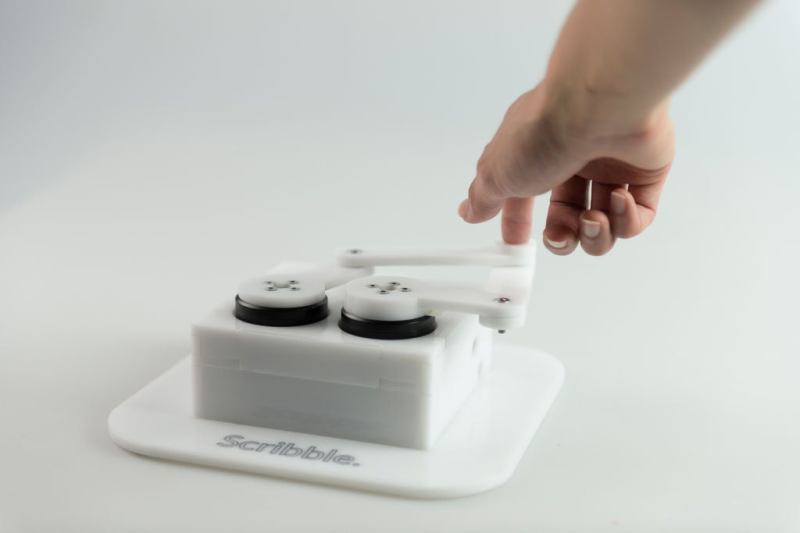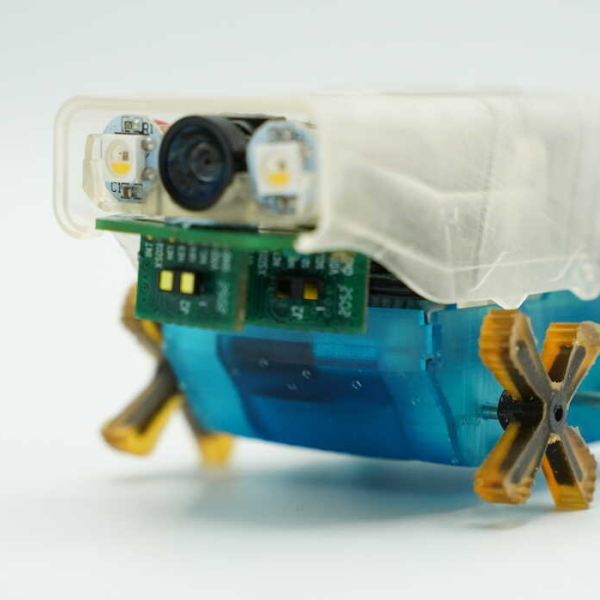Scribble is a haptic interface lets you draw your way through traffic. In an environment where fully automated vehicles are becoming the expectation for the next step in transportation, Scribble provides a friendly alternative that allows you to guide your car around, while the automation makes decisions on how to actually steer the car around obstacles.
The driver is guided by haptic feedback that alerts them about the road conditions or obstacles ahead. The project was conceived by [Felix Ros] for his master’s thesis at Eindhoven University, featured a five bar linkage that moves with two lateral degrees of freedom, commonly used for drawing robots.
The code run on an Arduino DUE control over serial by a program made in Open Frameworks that communicates with a Unity 3D driving simulator over UDP. Fellow graduate student [Frank van Valeknhoef]’s Haptic Engines are used as the actuators, outputting the position and a variable force.
The forward kinematics algorithms were based on a clock and weather plotter by SAP, sharing the same servo and drawing arm assembly. The left and right actuators update based on the desired angle, calculating the proper angles needed to achieve the correct position.
While automated vehicles may be able to travel efficiently from one destination to the next, they can’t necessarily wander off course to explore new places. Scribble takes back some of that freedom and allows drivers to decide for themselves where they want to be. It’s an interesting take at inserting the human back into the driver’s seat in automated cars.

















So its like steering a horse.
Now if only the car was as intelligent as a horse, then you could actually trust it to drive itself.
And a horse isn’t very smart!
But if you are going to make suggestions on where your car goes, why not just have a voice interface? Then you could just tell it where to go.
That would get very very annoying fast. Left… Right… Left… Left.. Faster.. Slower.. imagine doing that for 4 hours :))
My mother in law can imagine that already! (Ba-dum-tiss.)
Exactly right, neo2121. And you couldn’t talk on the phone while driving either. For a significant number of people the car would never move. And can you imagine the potential havoc that would insue if the music or podcast you were listening to unintentionally controlled the vehicle. Or intentionally did like that Southpark episode did with Amazon’s Alexa.
Interesting! This basically works like a backwards etch-a-sketch. Instead of turning knobs to move a nub, you move the nub to turn the knobs. That could make for an easy to recreate and interesting take on user input. You can skip the servos and use rotary encoders to get a cheaper non-haptic version of this. Now what could we use it for? Controlling a mouse or using it as a stylus/tablet seem obvious and probably more useful than anything to do with cars. Hmm.. if I can figure out a good use, maybe I’ll build one.
This is a really cool input device. Reminds me of “flying faders” on audio mixing consoles, but this one works in two dimensions.
Not so sure about the self driving car steering thing. It would be a very cool control for an fpv rc car though. An accelerometer in the car can provide the haptic feedback.
Seems a very imprecise and slow way of inputting something that may need to be very fast and precise. Sure, for lane changes on a highway it’s fine, but imagine doing that to get on a side-street or go through a roundabout in town.
It seems that the user interface is relying on the car already knowing what the surrounding features are, so it can give force feedback and draw a nice map of the road features.
When the car is driving around uncharted neighborhoods, or in places where the roads don’t match the maps, it’s entirely clueless and the system doesn’t work.
Lets see someone use this on a bumpy corugated Australian Dirt road where the drivable bit changes with the weather and where oncoming traffic is trying to use that same single track as you, with both vehicles doing 100kph.
what a joke.